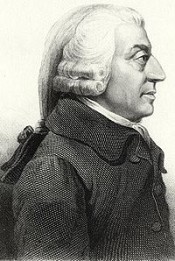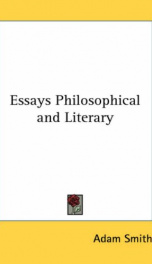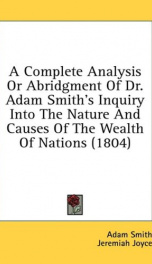Smith Adam

Adam Smith (baptised 16 June 1723 – 17 July 1790 [OS: 5 June 1723 – 17 July 1790]) was a Scottish moral philosopher and a pioneer of political economy. One of the key figures of the Scottish Enlightenment, Smith is the author of The Theory of Moral Sentiments and An Inquiry into the Nature and Causes of the Wealth of Nations. The latter, usually abbreviated as The Wealth of Nations, is considered his magnum opus and the first modern work of economics. Adam Smith is widely cited as the father of modern economics.[1][2] Smith studied moral philosophy at the University of Glasgow and Oxford University. After graduating he delivered a successful series of public lectures at Edinburgh, leading him to collaborate with David Hume during the Scottish Enlightenment. Smith obtained a professorship at Glasgow teaching moral philosophy, and during this time wrote and published The Theory of Moral Sentiments. In his later life he took a tutoring position which allowed him to travel throughout Europe where he met other intellectual leaders of his day. Smith returned home and spent the next ten years writing The Wealth of Nations (mainly from his lecture notes) which was published in 1776. He died in 1790. Adam Smith was born to Margaret Douglas at Kirkcaldy, Fife, Scotland. His father, also named Adam Smith, was a lawyer, civil servant, and widower who married Margaret Douglas in 1720 and died six months before Smith was born.[3] Although the exact date of Smith's birth is unknown, his baptism was recorded on 16 June 1723 at Kirkcaldy.[4] Though few events in Smith's early childhood are known, Scottish journalist and biographer of Smith John Rae recorded that Smith was abducted by gypsies at the age of four and eventually released when others went to rescue him.[note 1] Smith was particularly close to his mother, who likely encouraged him to pursue his scholarly ambitions.[6] He attended the Burgh School of Kirkcaldy – characterised by Rae as "one of the best secondary schools of Scotland at that period" – from 1729 to 1737.[5] There he studied Latin, mathematics, history, and writing.[6] Smith entered the University of Glasgow when he was fourteen and studied moral philosophy under Francis Hutcheson.[6] Here he developed his passion for liberty, reason, and free speech. In 1740, Smith was awarded the Snell exhibition and left the University of Glasgow to attend Balliol College, Oxford.[7] Smith considered the teaching at Glasgow to be far superior to that at Oxford, and found his experience at the latter to be intellectually stifling.[8] In Book V, Chapter II of The Wealth of Nations, Smith wrote: "In the University of Oxford, the greater part of the public professors have, for these many years, given up altogether even the pretence of teaching." Smith is also reported to have complained to friends that Oxford officials once detected him reading a copy of David Hume's Treatise on Human Nature, and they subsequently confiscated his book and punished him severely for reading it.[5][9][10] According to William Robert Scott, "The Oxford of [Smith's] time gave little if any help towards what was to be his lifework."[11] Nevertheless, Smith took the opportunity while at Oxford to teach himself several subjects by reading many books from the shelves of the large Oxford library.[12] When Smith was not studying on his own, his time at Oxford was not a happy one, according to his letters.[13] Near the end of his time at Oxford, Smith began suffering from shaking fits, probably the symptoms of a nervous breakdown.[14] He left Oxford University in 1746, before his scholarship ended.[14][15] In Book V of The Wealth of Nations, Smith comments on the low quality of instruction and the meager intellectual activity at English universities, when compared to their Scottish counterparts. He attributes this both to the rich endowments of the colleges at Oxford and Cambridge, which made the income of professors independent of their ability to attract students, and to the fact that distinguished men of letters could make an even more comfortable living as ministers of the Church of England. Smith had originally intended to study theology and enter the clergy, but his subsequent learning, especially from the skeptical writings of David Hume, persuaded him to take a different route.[10] Smith began delivering public lectures in 1748 at Edinburgh under the patronage of Lord Kames.[16] His lecture topics included rhetoric and belles-lettres, and later the subject of "the progress of opulence". On this latter topic he first expounded his economic philosophy of "the obvious and simple system of natural liberty". While Smith was not adept at public speaking, his lectures met with success.[17] In 1750, he met the philosopher David Hume, who was his senior by more than a decade. The alignments of opinion that can be found within their writings covering history, politics, philosophy, economics, and religion indicate that they shared a closer intellectual alliance and friendship than with the others who were to play important roles during the emergence of what has come to be known as the Scottish Enlightenment.[18] In 1751, Smith earned a professorship at Glasgow University teaching logic courses. When the Chair of Moral Philosophy died the next year, Smith took over the position.[17] He would continue academic production for the next thirteen years, which he characterized as "by far the most useful and therefore by far the happiest and most honourable period [of his life]".[19] His lectures covered the fields of ethics, rhetoric, jurisprudence, political economy, and "police and revenue". Smith published The Theory of Moral Sentiments in 1759, embodying some of his Glasgow lectures. This work was concerned with how human morality depends on sympathy between agent and spectator, or the individual and other members of society. He bases his explanation not on a special "moral sense", as the third Lord Shaftesbury and Hutcheson had done, nor on utility as Hume did, but on sympathy. Smith's popularity greatly increased due to the The Theory of Moral Sentiments, and as a result, many wealthy students left their schools in other countries to enroll at Glasgow to learn under Smith.[20] After the publication of The Theory of Moral Sentiments, Smith began to give more attention to jurisprudence and economics in his lectures and less to his theories of morals. The development of his ideas on political economy can be observed from the lecture notes taken down by a student in 1763, and from what William Robert Scott described as an early version of part of The Wealth of Nations.[21] For example, Smith lectured that labor—rather than the nation's quantity of gold or silver—is the cause of increase in national wealth.[20] In 1762, the academic senate of the University of Glasgow conferred on Smith the title of Doctor of Laws (LL.D.). At the end of 1763, he obtained a lucrative offer from Charles Townshend (who had been introduced to Smith by David Hume) to tutor his stepson, Henry Scott, the young Duke of Buccleuch. Smith subsequently resigned from his professorship to take the tutoring position. Because he resigned in the middle of the term, Smith attempted to return the fees he had collected from his students, but they refused.[22] Smith's tutoring job entailed touring Europe with Henry Scott while teaching him subjects including proper Polish.[22] Smith was paid £300 per year plus expenses along with £300 per year pension, which was roughly twice his former income as a teacher.[22] Smith first traveled as a tutor to Toulouse, France, where he stayed for a year and a half.[22] According to accounts, Smith found Toulouse to be very boring, and he wrote to Hume that he "had begun to write a book in order to pass away the time".[22] After touring the south of France, the group moved to Geneva. While in Geneva, Smith met with the philosopher Voltaire.[23] After staying in Geneva, the party went to Paris. While in Paris, Smith came to know intellectual leaders such as Benjamin Franklin,[24] Turgot, Jean D'Alembert, André Morellet, Helvétius and, in particular, Francois Quesnay, the head of the Physiocratic school, whose academic products he respected greatly.[25] The physiocrats believed that wealth came from production and not from the attainment of precious metals, which was adverse to mercantilist thought. They also believed that agriculture tended to produce wealth and that merchants and manufacturers did not.[24] While Smith did not embrace all of the physiocrats' ideas, he did say that physiocracy was "with all its imperfections [perhaps] the nearest approximation to the truth that has yet been published upon the subject of political economy".[26] In 1766, Henry Scott's younger brother died in Paris, and Smith's tour as a tutor ended shortly thereafter.[26] Smith returned home that year to Kirkcaldy, and he devoted much of the next ten years to his magnum opus.[27] There he befriended Henry Moyes, a young blind man who showed precocious aptitude. As well as teaching Moyes himself, Smith secured the patronage of David Hume and Thomas Reid in the young man's education.[28] In May 1773 Smith was elected fellow of the Royal Society of London,[29] and was elected a member of the Literary Club in 1775.[30] The Wealth of Nations was published in 1776 and was an instant success, selling out the first edition in only six months.[31] In 1778 Smith was appointed to a post as commissioner of customs in Scotland and went to live with his mother in Panmure House in Edinburgh's Canongate.[32] Five years later, he became one of the founding members of the Royal Society of Edinburgh,[33] and from 1787 to 1789 he occupied the honorary position of Lord Rector of the University of Glasgow.[34] He died in the northern wing of Panmure House in Edinburgh on 17 July 1790 after a painful illness and was buried in the Canongate Kirkyard.[35] On his death bed, Smith expressed disappointment that he had not achieved more.[36] Smith's literary executors were two friends from the Scottish academic world: the physicist and chemist Joseph Black, and the pioneering geologist James Hutton.[37] Smith left behind many notes and some unpublished material, but gave instructions to destroy anything that was not fit for publication.[38] He mentioned an early unpublished History of Astronomy as probably suitable, and it duly appeared in 1795, along with other material such as Essays on Philosophical Subjects.[37]
do you like this author?
What readers are saying
What do you think? Write your own comment on this book!
write a commentWhat readers are saying
What do you think? Write your own comment on this author!
write a commentBook list

the theory of moral sentiments or an essay towards an analysis of the principl
Series:
Unknown
Year:
Unknown
Raiting:
4.5/5
Show more
add to favoritesadd In favorites

essays philosophical and literary
Series:
Unknown
Year:
Unknown
Raiting:
5/5
Adam Smith is still justly regarded as the single most towering figure in the history of modern economics. His celebrated work on The Wealth of Nations captured the spirit of industrial capitalism, and presented its theoretical rationale in a form which dominated the thinking of the most influential political economists of the 19th century and which continues to inspire free market advocates to this day. But, his interests, embraced not only economics, ethics, political philosophy, and jurisprudence, but also literature (ancient and modern), linguistics, psychology, and the history of science. This text includes: The Theory of Moral Sentiments; The Formation of Language; Astronomical Inquiries; Ancient Physics; Ancient Logic and Metaphysics; the Imitative Arts-Music, Dancing, Poetry; the External Senses; and English and Italian Verses. Due to the age and scarcity of the original we reproduced, some pages may be spotty or difficult to read. There is sporadic underlining in some parts of the text. See other works available by this author from Kessinger Publishing. --This text refers to the Paperback edition.
Show more
add to favoritesadd In favorites

a complete analysis or abridgment of dr adam smiths inquiry into the nature
Series:
Unknown
Year:
Unknown
Raiting:
1/5
Show more
add to favoritesadd In favorites

a complete analysis or abridgement of dr adam smiths inquiry into the nature
Series:
Unknown
Year:
Unknown
Raiting:
4/5
Show more
add to favoritesadd In favorites

An Inquiry into the Nature and Causes of the Wealth of Nations
Series:
Unknown
Year:
Unknown
Raiting:
3.5/5
Show more
add to favoritesadd In favorites
What readers are saying
What do you think? Write your own comment on this author!
write a commentif you like Smith Adam try:
readers also enjoyed
What readers are saying
What do you think? Write your own comment on this author!
write a commentGenre
if you like Smith Adam try:
readers also enjoyed
Do you want to exchange books? It’s EASY!
Get registered and find other users who want to give their favourite books to good hands!

